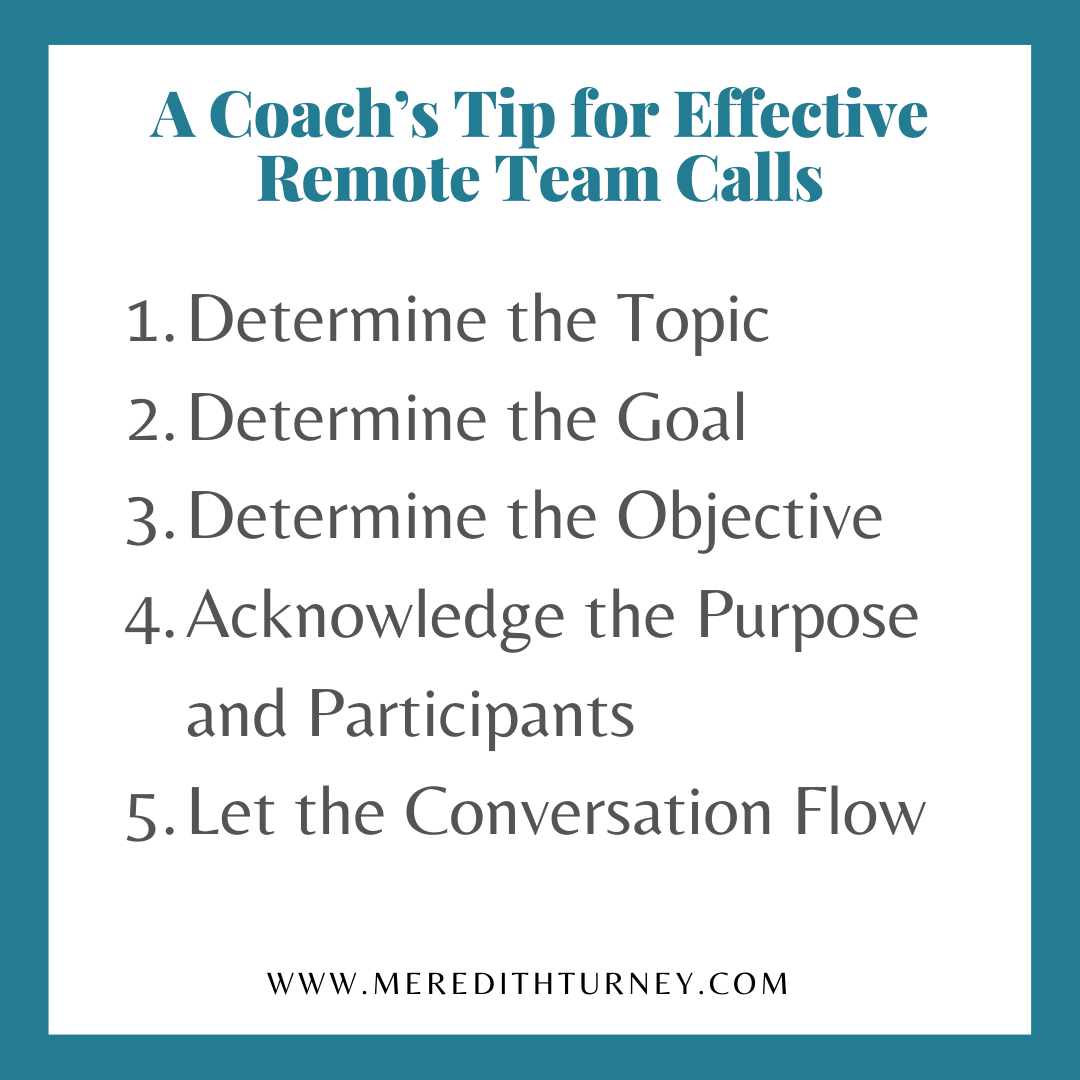A Coach’s Tip for Effective Remote Team Calls
The coaching agreement can help produce meetings with clear outcomes
For the last year I have been working on becoming a certified professional coach through the iPEC coaching program. It’s been a fantastic journey of growth; raising my own consciousness and developing my skills as a coach. One of the most powerful tools we learned early on in the program is the Coaching Agreement. This method can be used by conscious leaders as well for leading an effective call with their remote team.
Professional coaches follow guidelines upheld by the International Coach Federation. Just like any other profession, abiding by the profession’s standards is important for providing quality services and care. The Coaching Agreement is the cornerstone principle of a quality coaching session. It establishes a clear understanding of what the client wants to accomplish during their session. And it helps clarify for the client and coach what needs to be explored to accomplish their session’s goals.
For those of you who have experienced a coaching session with me, you’ll instantly recognize the Coaching Agreement format I’m about to share. It’s a 5-step process I recommend leaders use to produce calls and meetings that will create the best input and outcomes.
1. Determine the Topic
This may seem like a rather basic idea when you’re scheduling a call for your remote team. But actually, sometimes there is lack of clarity about what even needs to be discussed. So determine a clear, precise and concise topic that will be discussed then share that topic with participants ahead of time so they have time to start thinking about the topic. For example: Our topic is we need to adjust the 2021 budget projections.
2. Determine the Goal
Once you’ve clarified the topic to be discussed, determine your goal for the call. Make it a specific goal that all attendees are clear on. For example: By the end of this call, we will have determined three ways we will adjust the 2021 budget projections.

3. Determine the Objective
The objective drills down even further on the goal. One way to do this is to ask, by the end of the call, how will we know we’ve reached our goal? What will be our measure of success?
The purpose of this step is clarify how you can measure you’ve reached your goal, rather than just having a conversation with no clear outcome identified first. And it helps you, as the leader, guide the conversation towards this objective of measurement. For example: By the end of the call, these three team members will have an exact list of to-do items for adjusting the 2021 budget projections. OR we will know we’ve been successful when each team member has shared their ideas for adjusting the 2021 budget projections and we’ve moved to specific next-steps.
4. Acknowledge the Purpose and Participants
Often times when we join a team call, we all think we know why we’re holding the call. But we all have different perspectives and concepts about the states goal. So there isn’t a true “meeting of the minds” about what needs to be accomplished. To help overcome this chronic issue, share why the topic being discussed is important right now. Tie it to the overarching goals for the organization or the project. The more connection you can make between each small decision to the larger goals, the greater buy-in and outcomes. For example: We need to adjust the 2021 budget projections becausewe are in uncertain times and we need to be nimble and one of our stated goals for the organization is to turn a profit each quarter.
It’s also important to acknowledge the goals each team member comes to the call with. What expectations do they have? What do they think is important to accomplish during the call? Then acknowledge each attendee as they participate in the call. Make sure each one feels they shared their thoughts fully and got what they needed in order to accomplish the stated outcomes. For example: Each of us will share our understanding of what we will accomplish by the end of this call, and what you personally need out of this meeting to be successful.
5. Let the Conversation Flow
During a coaching session, I let the client lead because they intuitively know what they need to do; the coach is there to facilitate that connection. In this case, as the leader of a team call, your purpose is to draw out the best thoughts and conversation from your team. A great way to kickstart the conversation is to ask, what do we need to address or resolve to achieve this call’s goal? For example: In order to adjust our 2021 budget projections, what do we need to know and address during this call?
For those who find acronyms easier to understand, remember TGOAL: Topic, Goal, Objective, Acknowledge, Let Flow. This is little insight into how professional coaches conduct their calls. You can take this process and apply it to your own meetings and calls. As a conscious leader, your mission is to build a strong, collaborative team that works together to produce amazing results. Following coaching techniques like the Coaching Agreement is a powerful way to lead your team towards this success.
Work happy. Live happy. BE happy.
Meredith
Are you ready to increase your conscious leadership? Want to talk about building your remote team? Send me a note and let’s talk about achieving your goals.
And if you haven’t already, please sign up for this newsletter so you’ll receive the latest insights on conscious leadership, remote work success, remote team building, and the future of work.


